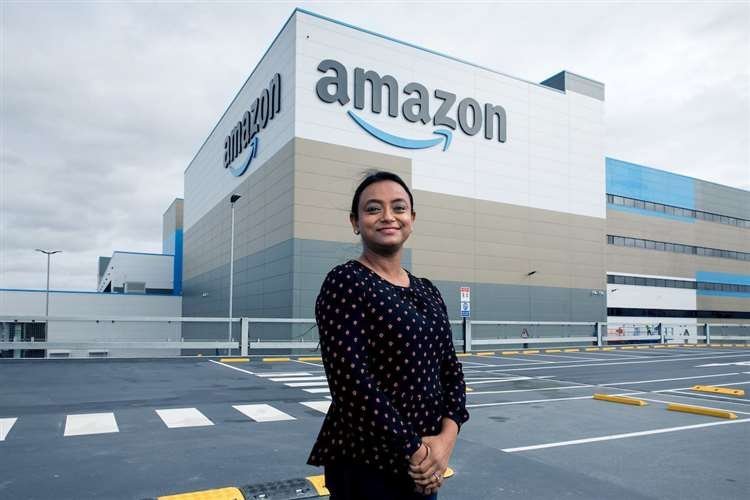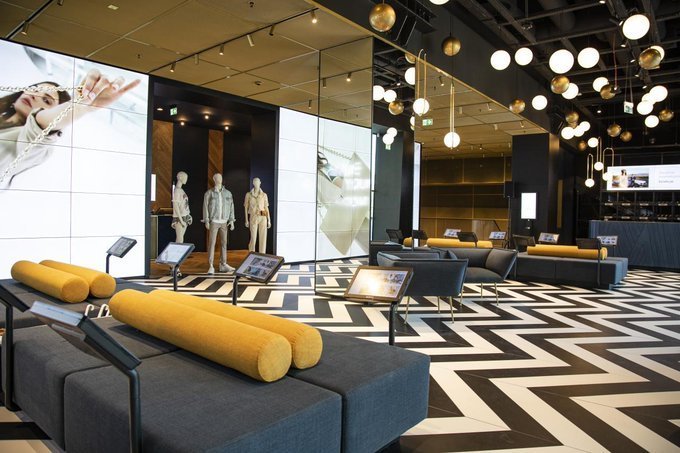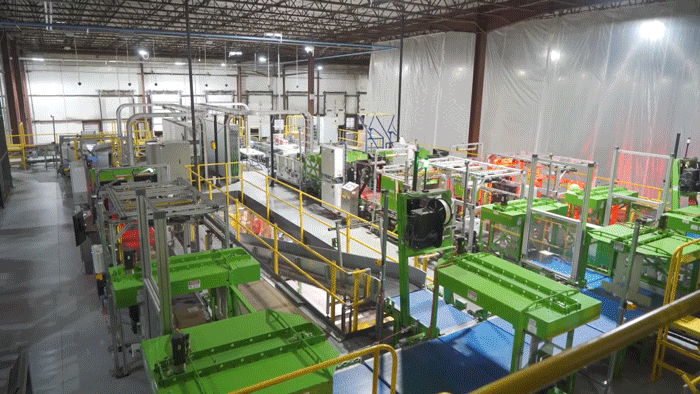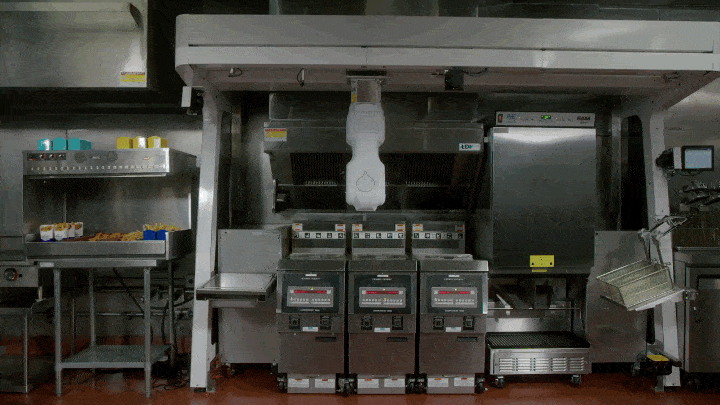
Inside the largest automated warehouse in the Southern Hemisphere
Boasting 200,000 square metres of floor space over four levels, the Western Sydney building is the first of its kind in Australia to harness the power of hundreds of robots that sort, distribute and move products. More robovac than robocop, the robots are capable of sorting more than 18,000 pods of products that could house anything from an iPhone to jewellery, books or toys.

Retailers Like the Idea of Micro Fulfillment Centers but Need Help Conceptualizing the Ideal Solution
The micro fulfillment automation market is one of the fastest growing – largely driven by explosive, sustained growth in grocery e-commerce credited to the pandemic. But micro fulfillment centers (MFC) are still a mystery to many retailers, with most asking, “when and why would they make sense for me?”

First look inside Amazon's huge Dartford Crossing warehouse where robots and humans work in sync
In a move Priyanka describes as "organised mess", robots then work in sync with humans to ferry these "pods" to different stow stations based on product size, navigating a chessboard of QR barcodes on the floor. The result is a sort of choreographed dance which sees shuttling droids yield way to one another depending on who has more pressing business.

Oslo Airport streamlines its duty-free shopping with AutoStore
The tax-free shops at Oslo Airport are very popular, and with limited storage space, TRN is dependent on smart and efficient solutions.

'Store-of-the-Future' Combines Physical, Digital, and Robotics
The new futuristic Modivo store design does not feature any stock on the shop floor, creating a more open, cleaner look, with fewer staff. Instead, customers entering the store – a theatre of digital displays showcasing the latest fashions, collections and company branding – sit on dedicated sofas to browse the store’s catalogue using a touch tablet. Running on a proprietary digital in-store platform, all stock is displayed on an easy-to-use interface, which is directly linked to the store’s adjoining ‘automated warehouse’ (stock room) – which holds more than 100,000 items.

Walmart to bring 'high-tech' robotics' to most of its US warehouses
The new system makes use of “a complex algorithm to store cases like puzzle pieces using high-speed mobile bots — operating with a precision that speeds the intake process and increases the accuracy of freight being stored for future orders. By using dense modular storage, it also expands building capacity. And by using high-speed palletizing robotics to organize and optimize freight, it creates custom store- and aisle-ready pallets, which take the guesswork out of unloading trucks.”

The Pentagon’s $82 Million Super Bowl of Robots
Meticulously constructed for the finale of the DARPA Subterranean Challenge — an elaborate three-year, $82 million Pentagon robotics competition — something bad has happened to humans underground, and the robots are coming to the rescue. Spot and its robo-teammates and competitors — dozens of walking, driving and flying robots — were on a scavenger hunt for “survivors”.

Is a Warehouse Management System Worth the Cost?
The warehouse management system is worth the cost for companies trying to enhance their warehouse management operations. Instead of relying on employees to do repetitive and simple activities, a WMS enables companies to leverage their employees’ skills, knowledge, and experience to grow and improve the company.

15-Minute Grocery Delivery Has Come to N.Y.C. Not Everyone Is Happy.
The ultrafast grocers operate from a network of micro hubs that are close to customers and often limit deliveries to a mile and a half or less. Each hub typically stocks between 1,500 and 5,000 items, compared with 35,000 products in a supermarket. Most hubs are “dark stores” not open to the public.

Poop sensors, drones, and robots: What automation looks like at the farm of the future
The promise of using drones and robots to amplify a farmer’s senses—in effect, returning a hands-on level of care to industrial-scale farming—remains real. As White put it: “We have the opportunity to leave those animals in an environment as natural as possible and still understand their day.”

Online shopping habits are set to challenge center store's recent growth
Meeting the challenge of today’s center store, the surveys suggest, requires an omnichannel strategy. Retailers need to make their center aisles more compelling places to shop. They also need to improve their digital properties, making it convenient for shoppers to add their favorite cereal or bottled drink to an order and also prompting discovery where they can.

Inside Giant's new automated e-commerce fulfillment center
The Giant Company has opened an automated e-commerce fulfillment center (EFC) aimed at catapulting the Giant Direct brand in Philadelphia. The 124,000-square-foot facility, located next to the airport just south of the city center, will stock a supermarket’s worth of products, from rotisserie chickens to frozen meals, and provide delivery to the city proper as well as its four surrounding counties. The Giant Company expects the EFC to fulfill up to 15,000 delivery orders each week.

The Urge to Automate is irresistible
The mechanizing of mundane tasks has been underway for generations. It’s made remarkable progress in the past decade: The number of industrial robots installed in the world’s factories more than doubled in that time, to about 3 million. Automation has been spreading into service businesses too.

A new tightrope for HR leaders: Integrate robots workers without alienating human employees
Like it or not, robots are coming for the restaurant world—and once programmed, they’re going to show up each day to watch as you drop mayo on your pants and inefficiently shove jalapeño poppers through your filthy flesh tubes. It’s a shame you aren’t also programmed to be perfect.

The Next Generation of Warehouse Labour
While technology is often thought of as appealing mostly to young people, it can make warehouse jobs more appealing to employees of all generations. To be sure, technology can help attract and retain younger workers "who expect a level of digital consciousness," Boykin says. At the same time, by reducing the physically demanding elements of many warehouse positions, technology opens them to older workers or those with physical limitations.

Mega retail store opens in Canada with automated robotic fulfillment
A massive new sporting goods store with a twist is opening in Calgary this weekend. Decathlon, which was launched in France in 1976, is opening a 63,000 square feet including a 7,000 square foot automated warehouse manned mainly robots. Customers will be able to watch the 27 robots in action as they service e-commerce orders for Western Canada and fulfill in-store requests.

Most shoppers (and employees) don't trust retailers to fulfill online orders as promised
Zebra Technologies Corporation, a provider of mobile computing, robotics, and other fulfillment-focused solutions, today released the findings of its 14th Annual Global Shopper Study, confirming there is a large trust gap between shoppers and retailers. More than half of decision-makers surveyed (55%) believe they are completely trusted to fulfill online orders as promised, but only 38% of shoppers indicate complete trust in retailers.

Here’s how Kroger is using robots to get groceries to customers’ doors
The country’s largest supermarket operator has opened the automated facilities, called sheds, in Ohio and Florida — and more are on the way. The sheds are the result of Kroger’s deal with British online grocer Ocado to use technology to quickly fill customers’ e-commerce orders and do that in a more profitable way.

Kroger is taking on Publix in Florida without opening a single grocery store
The automated sheds are a key piece of the company’s growth strategy and an effort to turn e-commerce into a bigger, more profitable business in a notoriously low-margin industry.

American Eagle acquires 'state-of-the-art' logistics firm, creators of Locus Picking Robots
Quiet Logistics operates a network of logistics centers, which utilize state-of-the-art technology including robotics, in Boston, Chicago, Los Angeles, Dallas, St. Louis and Jacksonville.
